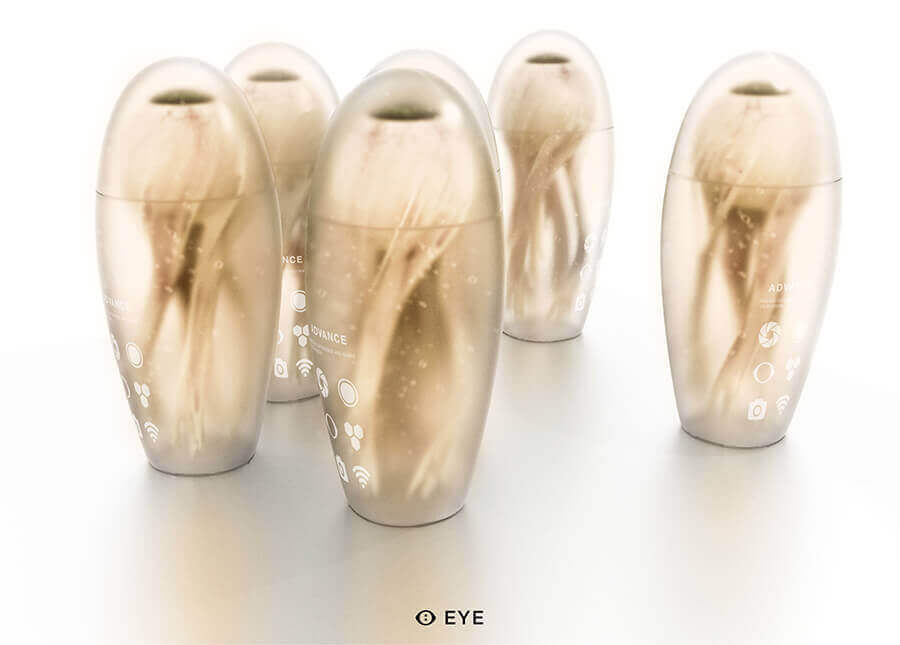MHOX is an Italian design studio that is heavily inspired by the human body aesthetics and functional properties. MHOX is focusing more on the development of concepts than the creation of consumer-ready products. Nevertheless, the studio has been using advanced 3D printing technologies and materials to create “products” in the field of abstract bio-mechanics, stylish fashion accessories and generally objects intended to raise questions on our future habits rather than focus on immediate usage.
Filippo Nassetti and Alessandro Zomparelli, the minds behind MHOX’s extreme concepts, follow a “passive-aggressive” approach, aiming to alter and mutate the body and its functions while blending with it at the same time. This element is evident in all of the studio’s designs and is the key characteristic that makes them unique.
Generating creativity

In order to achieve the “blending with every human” part, and since all bodies are significantly different, the designers have developed their own generative process based on computer simulations that customize each object and changes its properties accordingly. The materialization of such objects can only be done through the use of 3D printers.
The team has developed some exciting medical accessories such as orthostatic splints (Generative Orthoses) that feature a custom-made design to fit exactly to the hand or the leg of the wearer. A similar process was then applied to the creation of custom face masks in two separate projects: Collagene and Carapace, which in turn was split into the Vidiam and Audiam models.
All these projects share the use of generative software and 3D printing, as well as the advanced materials for laser sintering produced by a company called nCRP. These materials, which are called Windform, consist of a nylon (polyamide) powder charged with carbon or glass fiber particles. While the masks were developed to resemble “futuristic fossils” and offer a primarily artistic and conceptual value, the orthostatic medical aids can already be used to help people get highly tailored devices to overcome chronic arthritis problems or pain.
Looking and walking ahead

The same is true for the “Regenerative 0.1” conceptual project around leg prosthetics. The distinctive feature of this prosthetic aid is that it does not aim to only function as a leg, but also to resemble one that truly fits the rest of the body. This includes an exact shape and volume that is inspired by the muscular morphology of a human leg. Being on version 0.1, we are still very far from any actual prototypes. However the course has been set.
Speaking about future versions and expected release dates, the “EYE”, MHOX’s latest work, takes this concept to the extreme. The EYE is a project on sight augmentation using bioprinting technology. This ambitious design involves a fully functional, organic human eye that can offer enhanced vision, visual effects, and even the ability to record video and upload it directly to the network through WiFi.
This would not only be helpful to people with sight problems, but could also act as an upgrade to anyone. Thanks to its supposed hyper-retina and hyper-iris, it would provide a 15/10 sight. All this sounds deeply imaginary and of course it is, yet MHOX, possibly as a reference to other unrealistic crowd funding projects, has already announced the product availability date for the EYE, set for January, 2027. This may sound funny but who knows, they may get it right in the end!
Thinking the Future
MHOX is also actively exploring the functioning signals of the human brain using open-source electroencephalography devices that allow them to explore brain activity that corresponds to attention, meditation and concentration in real time. The studio uses this hardware for interactive art projects for the time being, but they are also experimenting in collaboration with Co-de-iT and ENTD to find new useful and more meaningful applications. If it will lead to the EYE, remains to be seen. For sure, the designers at MHOX are trying to look past current limitations into the new possibilities offered by 3D printing. That is exactly what designers’ brains do.

License: The text of "MHOX Design explores the future of generative wearables" by All3DP is licensed under a Creative Commons Attribution 4.0 International License.